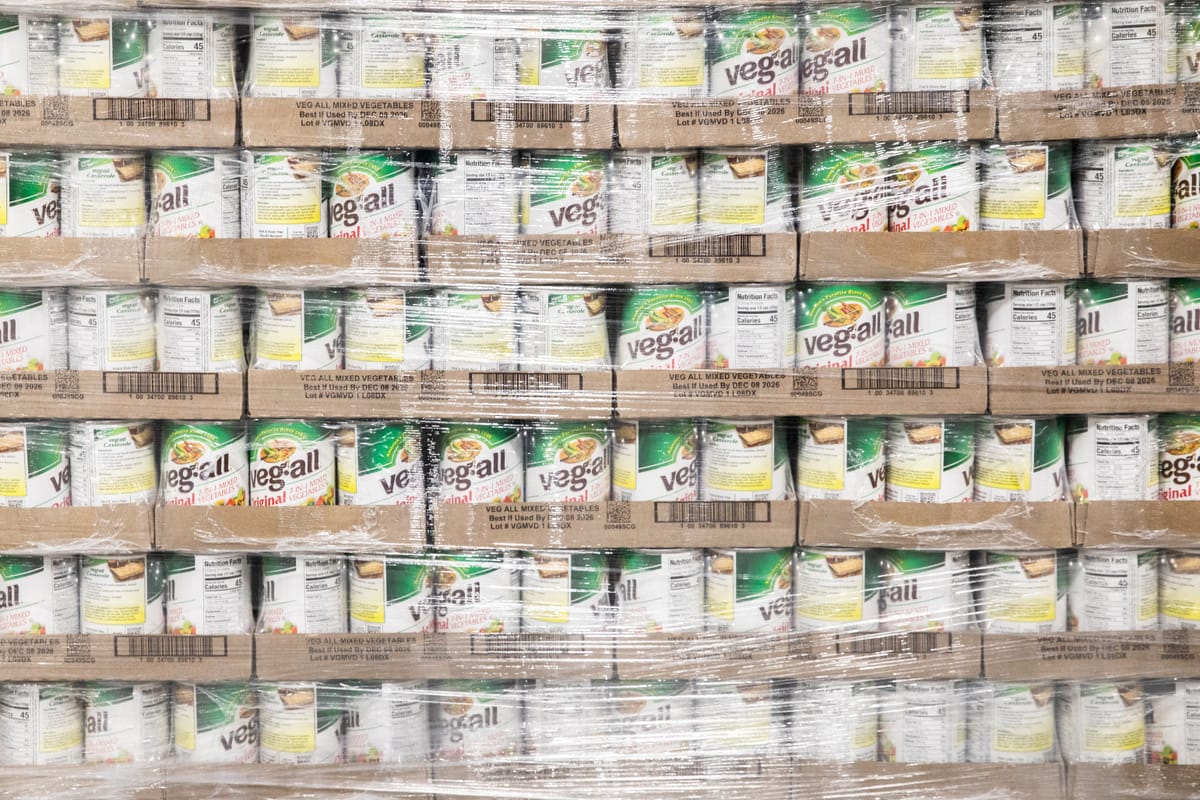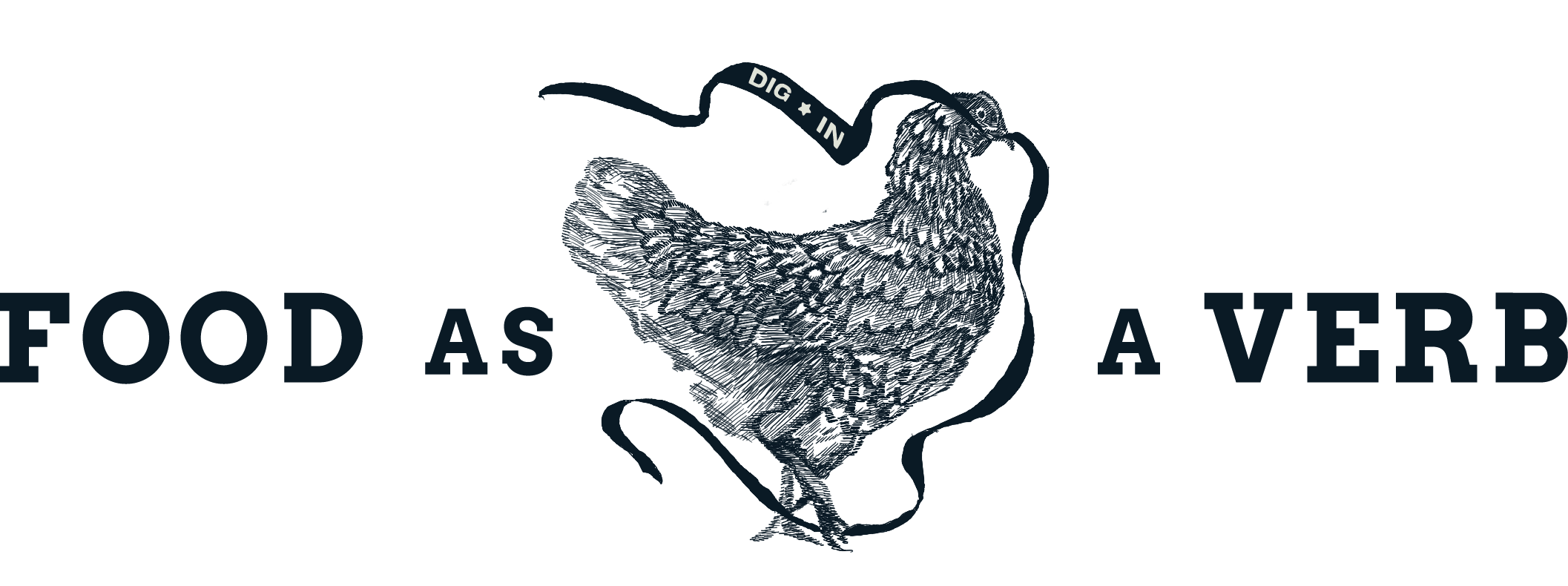The lines are longer. The ache is deeper. Here's how the Chattanooga Area Food Bank is responding to regional hunger.
Whatever numbers you imagine, they aren't high enough.

"This year, we will break all records."
This year, the Chattanooga Area Food Bank will deliver, provide, donate and offer more food for hungry families and individuals than ever before in its 51-year history.
"We will provide more than 20 million pounds of food this year," said CEO Melissa Blevins.
We are standing inside the Chattanooga Area Food Bank's 40,000-square-foot warehouse on Amnicola Highway. It feels like a Home Depot with food. More food than I've ever seen or dreamed of in my life. Like some healthier Wonka daydream.

It is packed floor-to-ceiling on industrial shelving and also includes two walk-in coolers full of food of everything imaginable: fresh winter squash, pallets of green beans in cans, energy drinks, raisins, Cheerios, blueberries, diced tomatoes, tortilla chips, day-old bakery bread, sheet cakes, applesauce in squeezable pouches and on and on and on.


Chattanooga Area Food Bank, Chattanooga, Tenn.
More carrots than I've ever seen.
More green cabbage than I'd ever want to see. (Sorry, cabbage.)


Carrots, cabbage, Chattanooga Area Food Bank, Chattanooga, Tenn.
This seems like enough food to last lifetimes.
"If we stop getting donations," said Kathy Martin, community engagement manager, "we would be bare bones in a month."

Martin, Blevins and communications coordinator John McAmis walk us through the long aisles of the Food Bank, a tour that should be required for every elected official, preacher, community leader and policy maker in the region.
Witness the scale of hunger and suffering.
Witness the scale of generosity and goodness.
Every ounce of food here is either donated or purchased using money from donations.
The money?
It comes from you, Chattanooga.
And the food?
It comes from grocers, government programs, food nutrition programs and regional farmers and growers. Every ounce of Food Bank food is either sourced from federal nutrition programs, donations or purchased using money from donations.
And all of it is distributed through the enduring hope of Food Bank leaders, volunteers and supporters.
Our Food Bank is Chattanooga's emergency room for those who are hungry.
Those who choose between a gallon of milk, bread and eggs and paying the light bill.
Those who work hard to the bone for a paycheck never fills the fridge.
With daring hope, our Food Bank is actively responding to hunger today and hunger tomorrow.
"It is a solvable issue," declared Blevins.

Part of the solution? Their 21st century Amazonian approach allows providers – from food pantries to churches to schools covering 7000 square miles and 20 counties – to use the Food Bank's website to order online, not unlike Amazon.com. A fleet of 14 trucks makes regular deliveries supported by an army of volunteers, all in the name of reducing food insecurity and solving regional hunger.
In this logistics town, don't overlook the massive logistics in the Food Bank's daily operations and mission.
"Product coming in, product going out. We’re a nonprofit that acts like a for-profit," Blevins said.

By the numbers, the Food Bank:
- serves 20 counties through 250 providers.
- employs 60 full-time folks.
- keeps fresh 7 million pounds of food annually through two walk-in coolers.
- operates three facilities.
- offers each guest an average of 70 pounds, or a week's worth of groceries, of donated food once a month.
- prepares thousands of snack-packs given to area schoolchildren every Friday. Each snack-pack costs $3.22 to prepare and includes two soups, two juices, two mac-and-cheese, two cereals and two applesauce pouches.
- works with 16 regional farmers.
- maintains a base of 4500 active volunteers who prepare 60,000 food boxes a month.
"Without volunteers," Blevins said, "we are dead in the water."
"Any given day, we know that 170,000 of our neighbors may not know where their next meal is coming from."

Food as a Verb thanks Main Street Meats, our sustaining partner, for its generous support.
Main Street Meats is a modern neighborhood butcher shop and restaurant in Chattanooga’s Southside deeply committed to animal care, local farms and land stewardship that promises an experience “as farm-to-table as it gets.”
Each day, dozens of volunteers work to prepare food boxes – from building the cardboard to taping stickers to packing to loading – which are then dispersed out to regional providers.






Chattanooga Area Food Bank, Chattanooga, Tenn.
Each client, or "guest," receives approximately 70 pounds of food, or roughly one week of groceries, every 30 days.
In 2024, Blevins estimated some 17.5 million meals will be given to hungry families.
"Any given day," she said, "we know that 170,000 of our neighbors may not know where their next meal is coming from."
This has always struck me as a most inconvenient truth, blasting away at my delusions around Chattanooga as a Best City Ever. Two truths exist in the same town:
More people are moving here.
More people are hungry here.
"This year," Blevins said, "we will break all records."
She continues, echoing earlier statements: "Hunger is a solvable issue. There is enough food in the US. It is a logistics challenge."
The solution is found in more effective policies and stronger supply chain logistics that allow donated food to quickly find its way to food banks across the nation.
"Services and policies, strengthening food systems, shortening supply chain. It’s a basic human right," she said.

During the pandemic, demand doubled overnight, Blevins said.
The Trump White House enacted effective, helpful policies. Yet, those policies sunsetted into what Blevins calls a not-so-perfect storm: inflation + money stretched for working families now receiving fewer benefits.
"In July, August and September, we experienced the longest lines we've ever seen," she said.
An emergency Food Bank board meeting only took 14 minutes: we will never turn away families. Do what you need to do, the board told Blevins.
Blevins began "beating the pavement," increasing donor support in order to increase food supply. Again and again, she talks about the bottomless generosity in so many Chattanoogans.
Here are three examples.

"Without volunteers, we are dead in the water."
Southeast Regional Co-Operative:
In 2015, the Food Bank joined eight other food banks partnering with farmers and producers around the Southeast. It's called the Southeast Regional Co-operative.
Farmers donate produce at a reduced price negotiated by food banks. The produce is boxed into a Pick-Pack program, allowing families access to fresh fruit and vegetables.
In the past, families receive non-perishables in their food box.
Today, they receive local broccoli, carrots, potatoes grown by regional farmers.
But, how can you keep fruit and vegetables fresh?

Walk-in Coolers:
In 2015, then-CEO Maeghan Jones raised funds to install two walk-in coolers that keep cool 7 million pounds of food each year.
"This changed everything," Blevins said.
Now, the Food Bank could offer perishable, fresh and more nutritious food to families and individuals. Potatoes, kale, broccoli, carrots and, yes, cabbage. It's a place to store the Pick-Packs and other donated items.


Walk-in cooler, Chattanooga Area Food Bank, Chattanooga, Tenn.
Foxwood Food Center:
When you listen closely to Blevins, Martin and McAmis, you hear the word “dignified” many times. It is an intentional attempt at dignifying what can often seem embarrassing and vulnerable. At Foxwood Food Center, a former big box grocery store off Wilcox Boulevard, the Food Bank has created a new grocery store of sorts, resembling all the dynamics of a normal grocer, minus the money.

There are shopping carts, aisles of produce, coolers of fruit and meat, plenty of dessert and household items. A volunteer escorts each guest through the process which is built on choice and freedom. Folks choose what they want.
“When I walk in a grocery store, nobody pushes a cart up to me and says, ‘Here’s what your family will eat this week,’ Nobody does that. So why would we do that to our neighbors?” asks Blevins.

Every 30 days, guests arrive and shop for 70 pounds of food, or about a week’s worth of groceries. During the holidays, the place was full. You can’t distinguish guest from volunteer.
“We all look alike,” said Blevins. “Hunger doesn’t discriminate.”
“The majority of people we serve are housed and working,” followed Martin.
There are macadamia nut cookies and peanut butter fudge. Bags of roasted almonds. Packages of frozen blueberries. Enchilada sauce and recipes. Turnips. Baby food. Grapes. Feminine products, tampons. Cleaning supplies. Dog food.



Foxwood Food Center, Wilcox Boulevard, Chattanooga, Tenn.

It is dignified, healthy and loving. It also may represent the future of Food Bank work.
In the midst of historic times, Blevins is actively doing future-forward work: how do we respond to hunger in Van Buren County, where there are zero resources, while also responding to hunger in downtown Chattanooga?
Can we build a network of decentralized and hyper-local food banks?
How can we use increasing technology to reduce the burden of inflation and supply chain difficulties?
How can we support local farmers?
How can we serve more people in more effective ways?
“We need to dream big,” she said. “We can’t just do what we’ve always done.”
Blevins – who has worked every position at the Food Bank over her 11-year career, from driving fork lifts to raising money– is one of our region’s most important leaders – big-hearted, so kind and hopeful, eyes clearly on a most meaningful prize.
Whatever important table you might be sitting around, she belongs there, too.
With tears softly forming in her eyes, Blevins tells one final story of two men who met on a bitter winter night.
She was working late; it was Christmastime. One man – brilliant, fiery, chronically homeless – appeared at the Food Bank, needing help.
Around the same time, another man — quiet, soft-spoken, not wanting the spotlight – drove into the parking lot. This man was a longtime donor, quietly bringing by an end-of-year check for Christmas.
Blevins made brief introductions. The homeless man and donor shook hands, made small talk. Neither knew the other's situation. In the growing dark, you wouldn't be able to tell the difference between the two. Just two Chattanooga men, talking in the cold.
The man left his check with Blevins then drove away. As taillights disappeared into the night, the homeless man turned to Blevins:
Who was that man?
He's one of our biggest donors.
Tears in his eyes, he said: I wish I had known. I would have loved to thank him.

All photography by Sarah Unger.
All design by Alex DeHart.
All words by David Cook. This story is 100% human generated; no AI chatbot was used in the creation of this content.
Story ideas, questions, feedback? Interested in sponsorship or advertising opportunities? Email us: david@foodasaverb.com and sarah@foodasaverb.com.
Food as a Verb thanks our sustaining partners for their generous support.






The Chattanooga Area Food Bank believes that no one should go hungry, and through our network of over 250 hunger-relief partners, we provide equitable access to food and resources to end hunger today and build pathways for a healthy, hunger-free future tomorrow. Niedlov's Bakery & Cafe, a Main St. anchor, has elevated our city's bakery experience to beautiful levels while strengthening community in immeasurable ways. Female-and-locally owned, Divine Goods offers beautifully curated gifts for every occasion. Be divine and send someone special a Divine Goods gift - locally sourced when possible, and always thoughtful. Tucker Build offers Chattanooga a commercial construction firm made up of design-build experts specializing in the planning, building and managing process. For more than 25 years, Lupi's has served locally-sourced, creatively made and award-winningly delicious pizza pies from five nearby locations. Society of Work is a shared coworking space designed with business flexibility in mind and the resources to help like-minded people connect and create amazing things together. From private offices to 24/7 coworking memberships, we provide the space you need to get work done.
